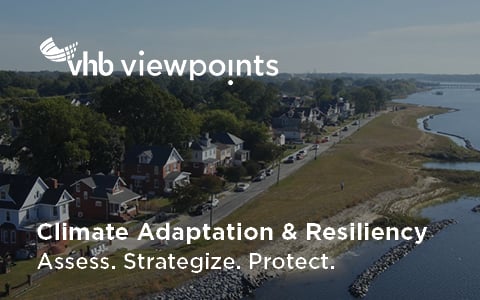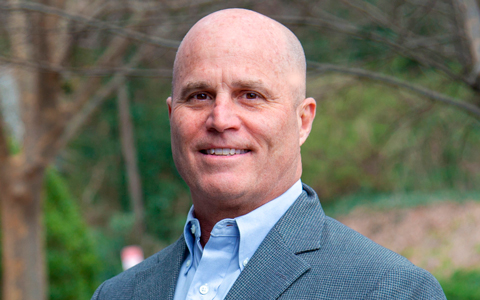
For Aquatic Resources Manager Chris Crow, a typical day at work might involve water, mud, mussels, and scuba gear. That’s because Chris leads a team of VHBers whose knowledge of Southeast streams and watersheds helps clients make sustainable development choices that comply with federal regulations and protect our natural resources.
This team is often outdoors in a variety of settings, working through a multitude of weather conditions, eating lunch on the go, and interacting with invertebrates. Together, they deliver water quality and biological monitoring studies, fish and mussel surveys, and stream and wetland restoration monitoring. We spoke with Chris to learn more about what aquatic biologists offer and what the health of a Georgia stream can tell us about native ecosystems.
VHB: Your time in the field is spent in forests and streams. For many of us, that sounds very different from our typical day-to-day interactions in office settings. How did you get started in this field?
Chris: Ever since I was little, I have loved playing in streams and water. I was the boy who picked up rocks to see what was underneath, hoping to find a salamander, fish, or bug. Now I’m paid to do this. I have a Master of Science degree in Fisheries Management from Louisiana State University, and before joining VHB, I owned a Georgia-based natural resources consulting firm specializing in aquatic ecosystems.
There’s not a typical day in the field, but some days are surprising, especially when we find something that we were not expecting. But that underscores the reason we are there in the first place—it takes a knowledgeable survey team to really get in there and look around.
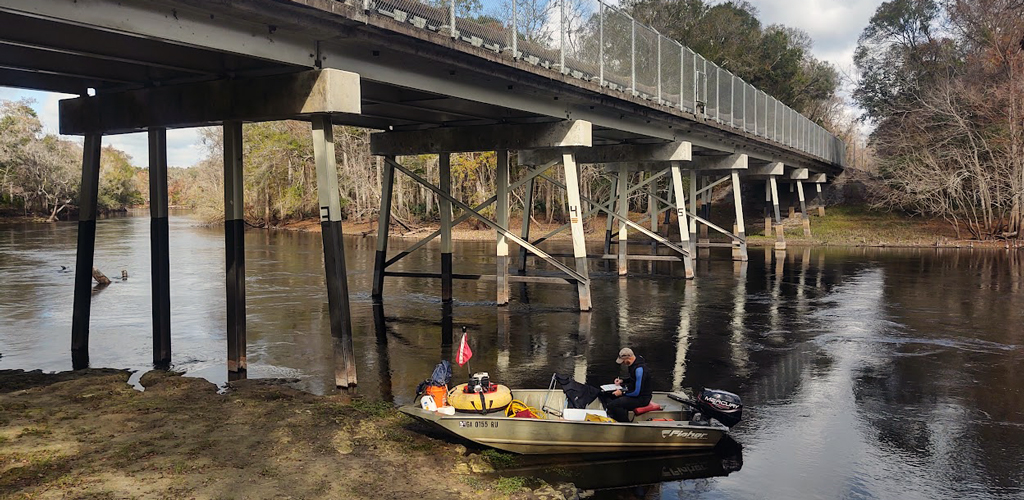
VHB: When you joined VHB in 2021, you brought along an aquatic survey specialty that many Southeast clients need. Tell us about your team and the work you do for clients.
Chris: We are team of seven biologists and ecologists with a focus on aquatics. Monitoring watersheds (i.e., water quality, biology, and aquatic habitat) makes up the bulk of our work. Many of these projects are driven by environmentally focused legislation with regulations that they must adhere to, such as the U.S. Clean Water Act and Endangered Species Act. Our projects involve a variety of client types, from state Department of Transportation (DOTs) to local governments.
Across VHB, we work with integrated teams of urban planners, transportation designers, and civil engineers on infrastructure and other project types so development does not adversely affect state or federally protected species. Any entity in Georgia with a National Pollutant Discharge Elimination System (NPDES) permit to release wastewater into streams must do periodic watershed assessments and continued monitoring of the health of the streams and water sources in their service areas. We have contracts with municipalities across the state of Georgia.
We also work with public and private partners to conduct water quality assessments and monitoring projects in cases of spills or to determine whether new reservoir construction is affecting aquatic habitat and life. We also do fisheries monitoring when reservoirs are constructed to determine how fisheries, flows, and water quality may be impacted.
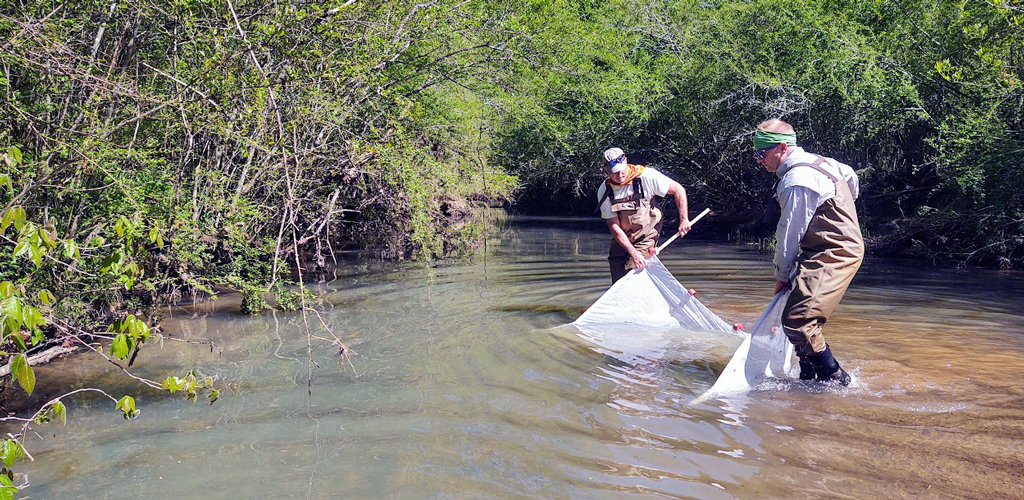
VHB: How does technology aid your team in the field? Can you open a laptop and connect to wireless in a forest now?
Chris: In some places we can. We recently completed a mussel survey and relocation for a utility in advance of a water pipeline being located through a section of the Tennessee River. We were able to utilize GIS and GPS with submeter accuracy to locate centerline points for the pipeline across a 1,000-foot-wide section of river. We dropped anchor and placed transects along these points and collected all mussels within a 15-foot-wide corridor. These mussels were then identified, counted, and relocated to suitable habitat out of the impact area.
As useful as technology can be, we still rely heavily upon “old school” methods like sketching and note taking using a mechanical pencil and water-proof paper.
VHB: You’ve been doing this work for some time. What changes in the environment have you documented?
Chris: Through extensive watershed monitoring work, I have the opportunity to see many streams and rivers over a period of years. I have observed trends in fish and macroinvertebrate communities, water quality, and aquatic habitat, as well as the presence of invasive species.
Some of the bigger changes I see are due to the transition of rural land to urban. Anytime a watershed is disturbed, it impacts the streams. Even development of a few new roads miles away can affect the shape and flow of a stream and alter its ecosystem. Some of the streams I’ve visited over the years in the Atlanta metro region are not recognizable from 10 years ago when they started as relatively small brooks and became wide, entrenched streams with eroding, sloughing banks.
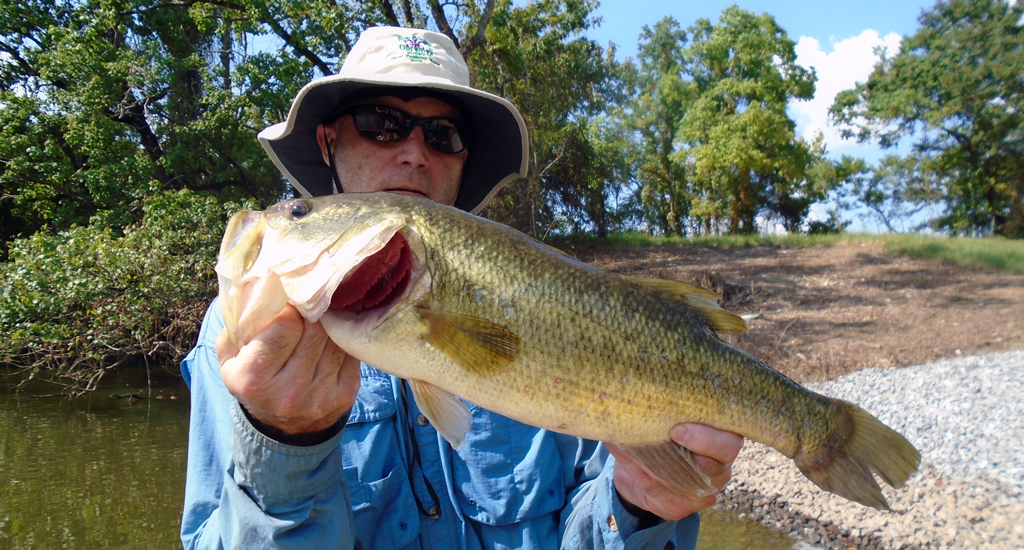
VHB: Do those changes mean the stream is no longer healthy?
Chris: Not necessarily, but degraded aquatic habitat and stream morphology are data points where we pay particular attention. We also monitor fish and macroinvertebrate communities (in addition to the aquatic habitat), and one particular group of macroinvertebrates that usually indicate good stream health is freshwater mussels. Mussels are highly sensitive to pollution because they filter vast amounts of water and their life cycle usually is dependent upon fish hosts for reproduction. Mussels are part of the mollusk phylum, which also includes aquatic snails. Many mollusk species are considered rare or species of concern, and are federally and state protected. We find very few mollusks in degraded/polluted watersheds.
VHB: What happens when you encounter an endangered fish or mollusk?
Chris: Depending upon whether it is state and/or federally protected, we will work with the appropriate natural resource agencies—usually the United States Fish and Wildlife Service (USFW)—to determine what the best steps forward are for protecting the specimens. This may involve avoiding construction during critical life cycle periods, such as during fish or mussel spawning, providing additional protective Best Management Practices (BMPs) during construction, or relocating specimens, especially less-mobile mollusks. We are permitted to conduct federally protected species surveys in Alabama, Arkansas, Florida, Georgia, Kentucky, Louisiana, Mississippi, and Tennessee.
Some of our encounters in the field this year included the federally-protected fishes Etowah and Cherokee Darters (Etheostoma etowahae and Etheostoma scotti, respectively), and mollusks Rough Hornsnail (Pleurocera foremani), Oval Pigtoe (Pleurobema pyriforme), and Shineyrayed Pocketbook (Hamiota subangulata); the state-protected fishes, Coosa Chub (Macrhybopsis etnieri) and Frecklebelly Madtom (Noturus munitus); and the state-protected salamander, Eastern Hellbender (Cryptobranchus alleganiensis).
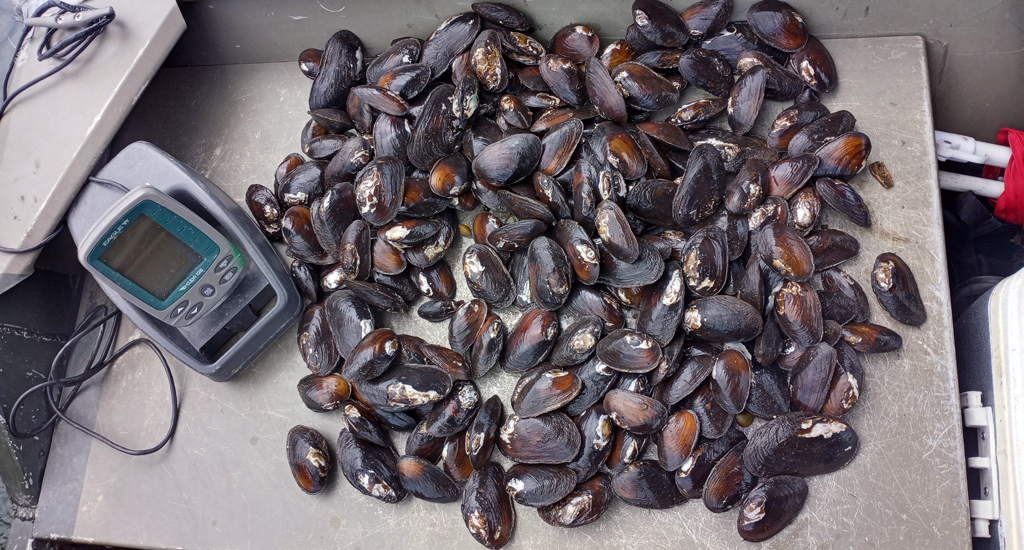
VHB: What can we do as individuals to protect our local streams?
Chris: Remember, everything flows downstream. Whatever we do will end up in a stream somewhere. Make sustainable choices and recycle as much as possible so less unwanted items appear your local streams.
Connect with Chris to find out how VHB aquatic biologists can move your project forward.

